Talking with Bruwer Raats, winemaker in South Africa
The ghost of Gaston Huet looms large in the life of Bruwer Raats (pronounced brew-vay rahts) of Raats Family Wines in Stellenbosch, South Africa.
Huet, an unbreakable French vigneron, survived a World War II Nazi concentration camp, then walked three days non-stop after release to make harvest at his Loire Valley domaine. Raats draws upon Huet’s inspiration daily as partner, along with brother Jasper and cousin Gavin, in his family’s Stellenbosch wine estate.
Considered the driving force behind South Africa’s recognition for producing world-class chenin blanc, the burly South African wine maker specialize in high quality chenin blanc and cabernet franc sourced from a variety of South Africa’s wine regions and microclimates. Each wine expressive of it’s unique terroir, or ‘sense of place.’
Raats also enjoys a partnership with Zulu winemaker Mzokhona Mvemve in Mvemve Raats, on an award-winning wine project called de Compostella (‘Composed of the Stars’) voted Best Red Blend in 2004 by Wine Spectator.
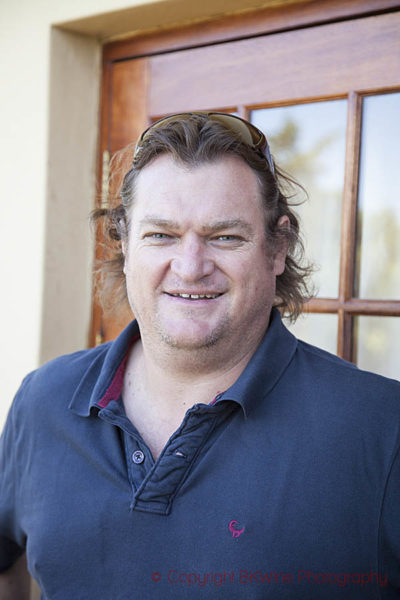
But things haven’t always been easy for this trailblazer. When Raats first started on his journey as a wine maker, industry peers viewed his unwavering commitment to quality, rather than quantity, and his laser-like focus upon first chenin blanc, and later cabernet franc, with skepticism. Today, they look to him for guidance. Gaston Huet would be proud.
You’ve been called South Africa’s ‘ambassador’ of chenin blanc. Do you feel like your efforts are paying off in making chenin blanc synonymous with South Africa, as malbec is with Argentina, and sauvignon blanc to New Zealand?
Bruwer Raats: Well, we started in 1994, and it took us awhile to figure out where to plant what where.
In 2010 things started to pick up – people were no longer just interested in hearing the story, but started buying the wines. The Chenin Blanc Association of South Africa has also been instrumental in making this happen.
Talk about your experiences with South African chenin blanc old vines vs. new vines, and the clones you’ve chosen vs. ones used for mass production?
Chenin blanc in South Africa is driven by the old vine concept – if you go and look at these old vines that were planted in 1950-1990, these vines were planted for volume, 30-40 tons per acre (60-80 tons per hectare), for the production of cheap wine and brandy.
Unfortunately, South Africa’s old vines became a marketing thing, rather than about quality produced in the vineyard.
These old vines were not planted for quality. So it is only by default that these vines survive, and produce quality wines. At the time they were planted, the vineyards were controlled by KWV (Ko-operatieve Wijnbouwers Vereniging van Zuid Afrika), and farmers didn’t have a choice in what was planted – farmers had to ask permission to plant vines other than those that they were told to plant. A good aspect of the KWV was their plant vectoring scheme.
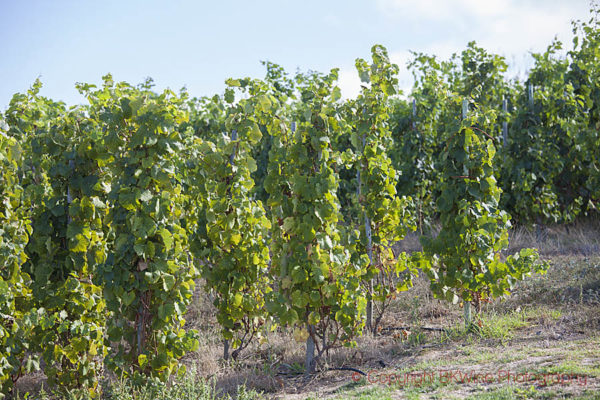
The question I’m asking industry today is “If we went to select quality by design – what can our potential be?” The answer is not quality by default, but quality by design. That is the way forward.
It is great to find old vines and save them, but future generations will ask “What did they add?” If you have a thirty-five year old vineyard, but it is planted with bad planting quality and bad rootstock, should you keep it for sentimental reasons, or rip it out, replant, and reach better potential more quickly?
Here at Raats Family Wines, we’ve chosen instead to focus on planting terroir-driven, single vineyard, high-density vines. (8 thousand vines 1/1 meter.) We planted the first vineyard, Eden, in 2010, and just released the 2014 in 2016. We used the Montpelier clone, which has been disregarded by other vine growers because the yields are so low. The clone was from a cutting from the mother block, which was being ripped out.
We also adjusted trellising. Grape farmers need to move away from the average. Start designing to your specific plot of land. Don’t listen to what others are doing, and focus on your land.
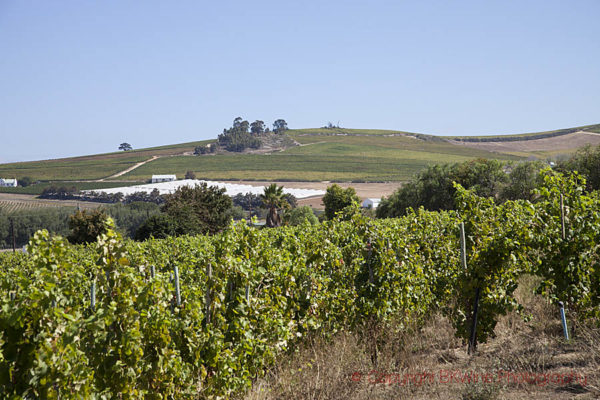
The point I am trying to make is that we can do quality by design, and can reach quality in a short amount of time. Just imagine what quality by design can hold for the future in thirty-five years? We in South Africa need to create our own future with quality by design. Old vines brought us to a certain part, but we need to move beyond.
The flora and fauna of South Africa rank among the world’s most diverse. How does South African chenin blanc styles reflect this diversity?
What I like to say about chenin blanc is that it becomes a conductor of the soil type. If you look at the Loire, the soil is calcareous.
I use deconstructed table top sandstone, which yields riper, yellow fruits – peach, pineapple, as well as more structure, and more weight. I also use deconstructed granite, which produces leaner, more linear wines, wines with minerality, precision, and notes of citrus and lime. Malmesbury shale, another South African soil type, falls in the middle of the other two soil types, creating more mineral, linear wines with yellow, richer fruits notes. These are very different wines produced in close proximity to one another.
So start with the soil type, and then you can move forward with the right foundation. Know what to plant, how to trellis, and put all these components together.
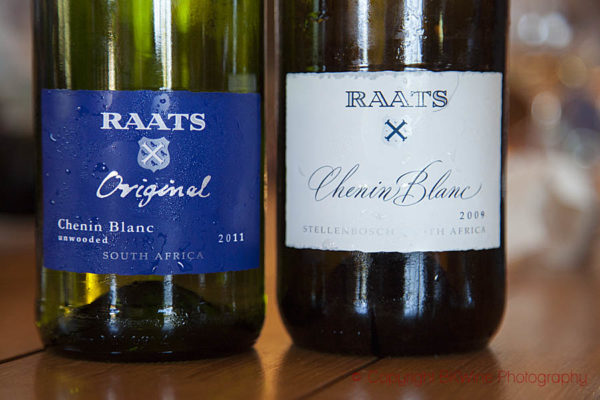
You say that Stellenbosch is the best place to grow chenin blanc. What makes the region so special for this cultivar?
Yes, chenin blanc can do well anywhere, because I planted chenin blanc all over South Africa. I think with global warming, the Swartland will be under new pressure because of lack of water; Walker Bay is an exciting wine region – very interesting, cooler, closer to the sea, while Stellenbosch has many soils, and is also close to the sea, but not as warm as Swartland.
Any inspiration(s) that inform your winemaking? Any innovations that excite you with regard to South African chenin blanc today?
Domaine Huet is a huge inspiration – just the story of Gaston Huet, who walked from a German concentration camp for three days back at his domaine in the Loire to harvest the grapes. Some of his colleagues died trying to make it home. Just the commitment – the story of Gaston Huet made me think about the commitment it takes to make great chenin blanc.
I also tend to take a gastronomic, Michelin-starred approach to tasting wine. What I try to do by using different soils types, you have all these different components. The wine must be pear-shaped when it opens your mouth. From the shape it takes on your palate, you can tell immediately about the wine’s quality and complexity. Also, what the wine shows on nose must also appear on the palate – there must be a connection between nose and palate.
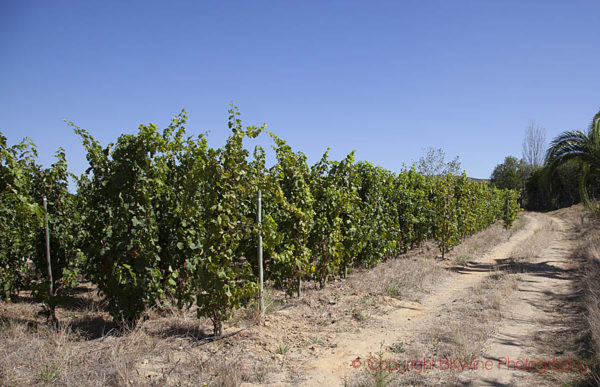
By using different soil types, it’s like having a puzzle, and my job is putting it all together. When I started making my chenin blanc in South Africa twenty years ago, I was not very well understood at first, because my wines were not overly oaked – they were dry, elegant, complex. I don’t create monsters in the bottle, I’m always focusing upon complexity and elegance.
I have a clear line of dry wine from 2000 forward to present. I use 20-30 % new oak, some old oak, and about 30-40% neutral oak up to 7-8 years old. It’s important to go into barrel for intense lees contact. Oak is like salt and pepper – once you’ve got your food (wine) figured out, then you figure out if you need salt and pepper.
INRA Val de Loire Centre has determined that flavors derive from extensive lees contact, stabilize color, age well, and show secondary flavors. Chenin blanc needs to stay on extended lees for a minimum of six to nine months – it’s essential for making chenin blanc that will last. Certain wines, such as Raats Old Vine Chenin, are left for eighteen months. The 2009, for example, is delicate and complex.
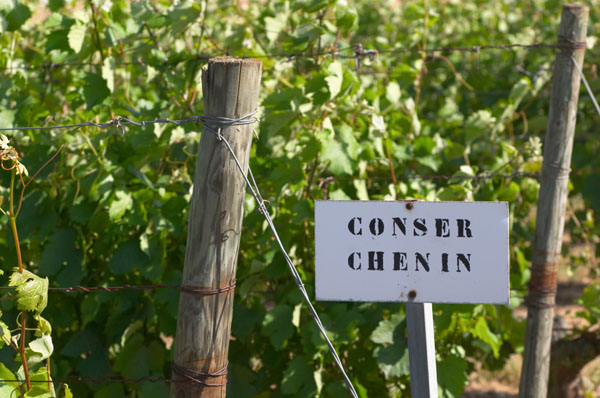
Talk about your partnership with winemaker Mzokhona Mvemve in Mvemve Raats, which produces the award-winning de Compostella (‘Composed of the Stars’), voted Wine Spectator’s Red of Wine of the Year in 2004.
In 2002, I got a call from Mzokhona Mvemve, who is from the Zulu tribe wanting to apply for a job. We had a two-minute interview, and I hired him right on the spot. I’m very instinctual, and tend to follow my gut. We just got on well. He wants the same thing that I do – to produce a wine of top quality. Later, I approached him about starting a company together. We are both adamant that when you put your name on something, it has to be of the highest quality, because it represents your family.

We go out to Stellenbosch, and search for the best sites suited to Bordeaux varieties. When we find a block we like, we never take the whole block. Instead, within the block we cherry pick the fruit we want, then make the wine, and barrel age for one year. At the end of one year, we blind taste, and score each wine from each parcel. Anything scored under 90 points gets tossed, whatever is best leads to de Compostella is not a style, but rather a promise of consistent quality. For example, in 2010, we didn’t release de Compostella. The wine is not going to be the same as the one produced the year below, but the quality will be as good or better every year.
I don’t have any hobbies, but what I do is consistently buy great wines and consistently bench mark our wines against the best, such as Château Haut Brion and Château Cheval Blanc. If you don’t know what great wine tastes like, how can you pick it out in your own wine?
Anything else you’d care to share with readers about Raats Family Wines or your future goals?
When I started Raats Family Wines, chenin blanc was an obvious choice – we had the world as our oyster. We could go anywhere in the world and say “this is what great chenin blanc should taste like.” Before then, consumers were drinking mostly Vouvray and Savennières, so we were able to educate them.
But when I started out as a winemaker, I was working at a winery where I tasted their cabernet franc, and felt it was the best in the cellar. That’s when I decided to make cabernet franc. My view for the first ten years as a winemaker was that I just wanted to prove that South Africa could produce premium cabernet franc for ten years in row. 2001 was the first year, and by 2011, I had ten years of quality to show for it. Over the next ten years, I want to make cabernet franc popular.
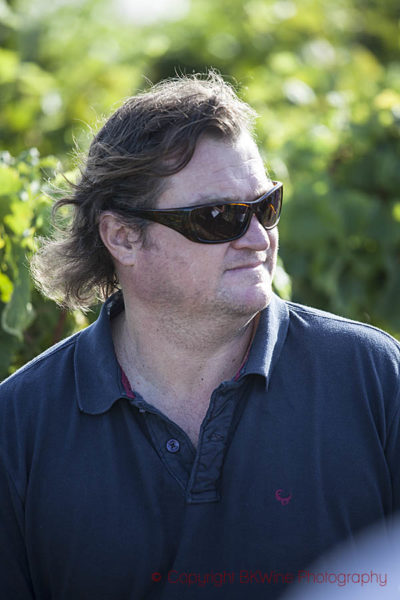
In 2010, I added a wine called Dolomite Cabernet Franc, which is more approachable, but still exceptional wine at a lower price. I also added Red Jasper, which is a Bordeaux Blend, but 80% cabernet franc dominated. I call it ‘the gateway drug to cabernet franc.’ If you like Red Jasper, you’re probably going to like cabernet franc on its own. Often, people won’t order cabernet franc on its own if they see it on a wine list. It’s an underrated wine for the wrong reasons. What I like about cabernet franc is that if I open a bottle, by the time I finish the wine…it has so many dimensions, it keeps you thinking while you’re drinking.
Finally, if being a winemaker in South African has taught you anything, it’s taught you…?
What’s the biggest lesson? You’re just a cog in the whole system. When you work with nature, never be arrogant, or nature will cut you down. You learn a certain humility; you can’t control it, but you can interpret it. To interpret it, stay humble, stay close to ground, be grounded, and always remember you make to bring enjoyment to other people.
The biggest accomplishment isn’t the medal, or the scores – you can’t eat gold. No, it’s when someone tells me, “Bruwer, I tasted your wine, and I really enjoyed it, something shifted in me about this cab franc.” It’s a compliment, because it tells me that I’ve done my job, conducting and brought enjoyment to others.
LM Archer is a freelance writer based in Santa Cruz, California. She is Francophile who considers wine an art and Burgundy the centre of the universe. She is the founder and editor of binNotes | redThread.
[box type=”info” style=”rounded” border=”full”]This is just one of a sea of talented winemakers that are today working in South Africa. Come and discover the fantastic wines of this exciting country on a wine tour to South Africa with BKWine.
Travel to the world’s wine regions with the wine experts and the specialist in wine tours.
Wine tours by the experts for the wine lover. BKWine wine tours.[/box]


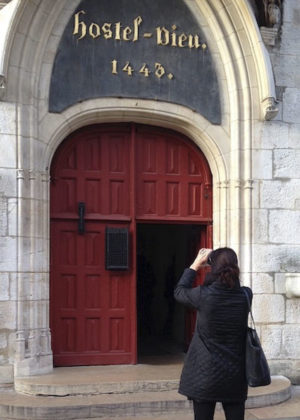
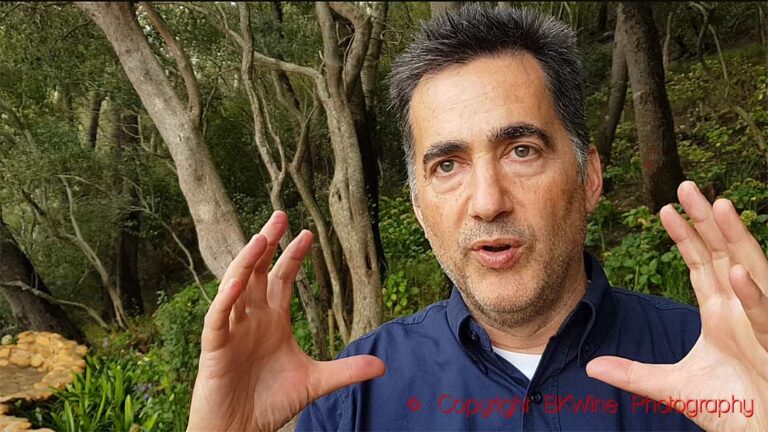
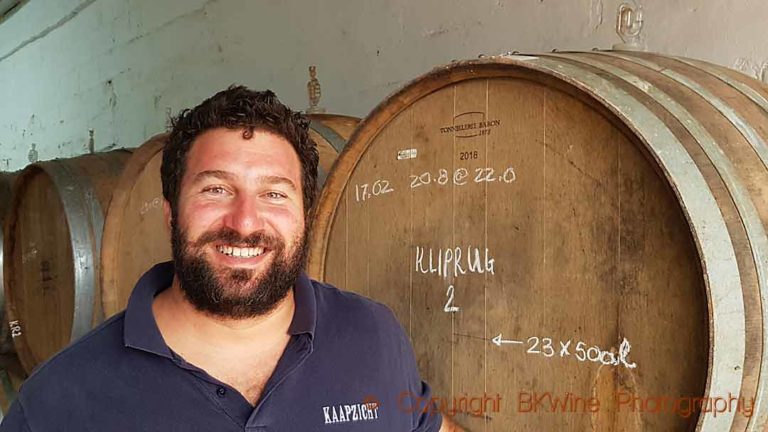
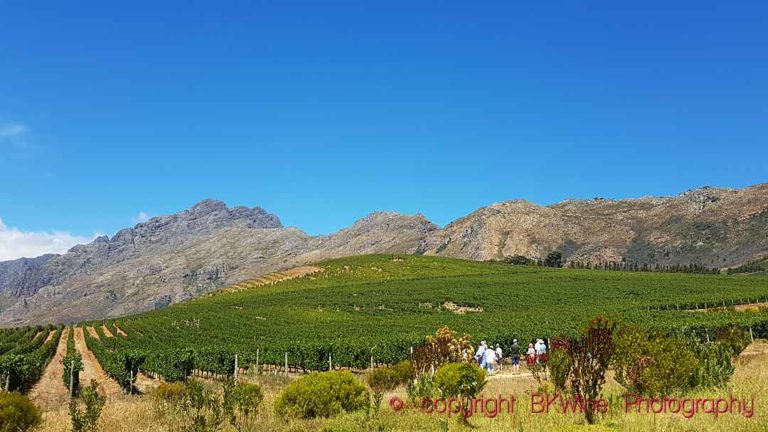






One Response
I love this one. In fact, the previous owner of my local wine shop knows Raats personally from his visits there and put his wines at the forefront in tastings so I’ve been curious to learn more.
I’m particularly impressed by the pace of advancement towards quality – Eden planted in 2010 and the 2014 already in the hands of consumers. That seems to project much possibility and soon! Chenin blanc is compelling, the influence of place is so instrumental because it is a shape-shifting thriver!
And Huet is dear to our heart, of course, as writers on his lifetime! Great article, Lynn!